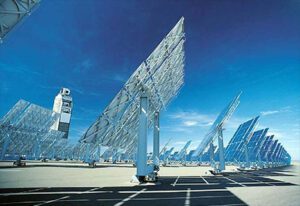Chronology of a Nuclear Disaster
 The Tokyo Electric Power Company (Tepco) has released the status and chronology of the Fukushima Daiichi Nuclear Power stations starting with the day of the quake March 12. It was not untill March 25th that they were able to begin cooling the damaged reactor. Here is the released chronology.
The Tokyo Electric Power Company (Tepco) has released the status and chronology of the Fukushima Daiichi Nuclear Power stations starting with the day of the quake March 12. It was not untill March 25th that they were able to begin cooling the damaged reactor. Here is the released chronology.
All 6 units of the Power Station have been shut down.
Unit 1 (Shut down)
– Explosive sound and white smoke were confirmed after the big quake occurred at 3:36 pm on March 12. It was assumed to be hydrogen explosion.
– At 3:37 pm on March 25, we started injecting freshwater to the reactor and are now injecting fresh water by a motor driven pump powered by the off-site transmission line.
The current water injection volume is approx 4.5㎥/h from the reactor feed water system.
– We commenced injection of nitrogen gas into Primary Containment Vessel at 1:31 am on April 7.
– At 11:22 am on August 10, we started cyclic cooling for the water in the spent fuel pool by an alternative cooling equipment of the Fuel Pool Cooling and Filtering System.
– On October 28, we completed installation of the cover for the Reactor Building in order to contain dispersion of radioactive substances.
– At 4:04 pm on November 30, we started operation to inject nitrogen into the reactor pressure vessel.
Unit 2 (Shut down)
– At approximately 6:00 am on March 15, an abnormal noise began emanating from nearby Pressure Suppression Chamber and the pressure within the chamber decreased.
– At 10:10 am on March 26, we started injecting freshwater to the reactor and are now injecting fresh water by a motor driven pump powered by the off-site transmission line.
– At 2:59 pm on September 14, we started injecting water to the reactor through core spray system water injection piping arrangement in addition to the water injection through reactor feed water system piping arrangement.
Water is currently injected at approx. 3.1㎥/h through reactor feed water system piping arrangement, and at approx. 4.3 ㎥/h through core spray system water injection piping arrangement.
– At 5:21 pm on May 31, we started cyclic cooling for the water in the spent fuel pool by an alternative cooling equipment of the Fuel Pool Cooling and Filtering System.
– At 8:06 pm on June 28, we started injecting nitrogen gas into the Primary Containment Vessel.
– From 6:00 pm on October 28, we put the gas management system of the reactor containment vessel in operation.
– At 11:04 am on November 6, we started operation of radioactive material decontamination instrument of spent fuel pool.
– At 10:46 am on December 1, we started the nitrogen injection to the Reactor Pressure Vessel.
Unit 3 (Shut down)
– Explosive sound and white smoke were confirmed at approximately 11:01 am on March 14. It was assumed to be hydrogen explosion.
– At 6:02 pm on March 25, we started injecting fresh water to the reactor and are now injecting fresh water by a motor driven pump powered by the off-site transmission line.
– At 2:58 pm on September 1, we started water injection by core spray system in addition to water injection by the reactor feed water system piping arrangement.
Water is currently injected at approx. 2 ㎥/h through reactor feed water system piping arrangement, and at approx. 6.1 ㎥/h through core spray system water injection piping arrangement.
– At 7:47 pm on June 30, we started cyclic cooling for the water in the spent fuel pool by an alternative cooling equipment of the Fuel Pool Cooling and Filtering System.
– At 8:01 pm on July 14, injection of nitrogen gas into the Primary Containment Vessel started.
– At 4:26 pm on November 30, we started operation to inject nitrogen into the reactor pressure vessel.
Unit 4 (Outage due to regular inspection)
– At around 6 am on March 15, we confirmed the explosive sound and the sustained damage around the 5th floor rooftop area of Reactor Building.
– At 12:44 pm on July 31, we started cyclic cooling for the water in the spent fuel pool by an alternative cooling equipment of the Fuel Pool
Cooling and Filtering System.
– Regarding spent fuel pool for unit 4, from August 20 to November 8, we had decreased salinity by using the desalting facility. In order to decrease more salinity, we installed Ion exchange equipment and started the equipment at 10:58 am on November 29.
– At this moment, we don’t think there is any reactor coolant leakage inside the primary containment vessel.
Unit 5 (Outage due to regular inspection)
– Sufficient level of reactor coolant to ensure safety is maintained.
– At 5:00 am on March 19, we started the Residual Heat Removal System Pump in order to cool the spent fuel pool.
– At 2:30 pm on March 20, the reactor achieved cold shutdown.
– At 2:45 pm on July 15, we started the operation of the original Residual Heat Removal System (System B) by its original seawater pump.
– From November 28, we started cleaning to avoid the performance deterioration of pumps by sucking up sands etc. accumulated at the bottom of the inlet canal pump room.
– At this moment, we don’t think there is any reactor coolant leakage inside the primary containment vessel.
Unit 6 (Outage due to regular inspection)
– Sufficient level of reactor coolant to ensure safety is maintained.
– At 10:14 pm on March 19, we started the Residual Heat Removal System Pump of Unit 6 to cool down Spent Fuel Pool.
– At 7:27 pm on March 20, the reactor achieved cold shutdown.
– At 2:33 pm on September 15, we started separately cooling the reactor through the Residual Heat Removal System and the spent fuel pool through Equipment Cooling Water System and Fuel Pool Cooling System.
– At this moment, we do not think there is any reactor coolant leakage inside PCV.
Others
– At around 10 am on June 13, we started the operation of the circulating seawater purification facility installed at the screen area of Unit 2 and 3.
– At 8 pm on June 17, we started operation of Water Treatment Facility against the accumulated water. At 6:00 pm on July 2, we started the circulating injection cooling to inject the water, which was treated by the accumulated water treatment system, to the reactors through the buffer tank.
– At 7:41 pm on August 19, we started treatment of accumulated water by parallel operation of one line from the cesium adsorption instrument to the decontamination instrument and the other treatment line of the cesium adsorption instrument No.2.
– At 2:06 pm on October 7, we started to spray purified accumulated water brought from Unit 5 and 6 continually in order to prevent dust scattering and potential fire outbreaks from the cut down trees.
– On October 28, we started installation of the water proof wall at the sea side, in front of the existing shore protection, Units 1-4, in order to contain marine pollution by underground water.
– At 9:25 am on November 15, we started transfer of accumulated water from basement of Unit 3 turbine building to Centralized Radiation Waste Treatment Facility Building.
– At 6:03 pm on November 30, we started transfer of the accumulated water from the basement of Unit 2 turbine building to Centralized Radiation Waste Treatment Facility High Temperature Incinerator Building.
– From 10:00 am on December 1 to 4:00 pm on December 2, we transferred of the accumulated water from Unit 6 turbine building to Temporary Tank.
– On December 2, as we finished the construction work to reinforce on-site power, we stopped the evaporative concentration apparatus at 6:00 pm on December 2, the water desalinations (reverse osmosis membrane type) at 8:04 am on December 3 and the cesium adsorption apparatus at 8:04 am on December 3, respectively, in order to start receiving power from the power source. As for the second cesium adsorption apparatus, it is operated without interruption and the treatment of accumulated water is in progress. There is no adverse effect to water injection into the reactor, as purified water in the buffer tank is utilized. We restarted the water desalinations (reverse osmosis membrane type) at 1:30 pm on December 3 and the cesium adsorption apparatus at 2:22 pm after power receiving operation.
– At around 11:00 am on December 3, the water leaked form the cutting point during the cutting work of the hot-water boiler pipe to demolish the machine room etc, which is east side of the building next to service building unit 1 and 2. At 11:30 am on the same day, we found it stopped leaking. The water came from the residual water of the hot-water boiler tank (tank capacity: 14㎥) and there is no obvious radiation dosage differences between the water leakage area and the around of the background level.
![]() Tags: containment vessel, dispersion, feed water, filtering system, fresh water, injection volume, nitrogen gas, nuclear power stations, piping arrangement, radioactive substances, reactor pressure vessel, spray system, tepco, tokyo electric power company, transmission line, water injection, water system, white smoke
Tags: containment vessel, dispersion, feed water, filtering system, fresh water, injection volume, nitrogen gas, nuclear power stations, piping arrangement, radioactive substances, reactor pressure vessel, spray system, tepco, tokyo electric power company, transmission line, water injection, water system, white smoke
Short URL: https://www.solarthermalmagazine.com/?p=14977

